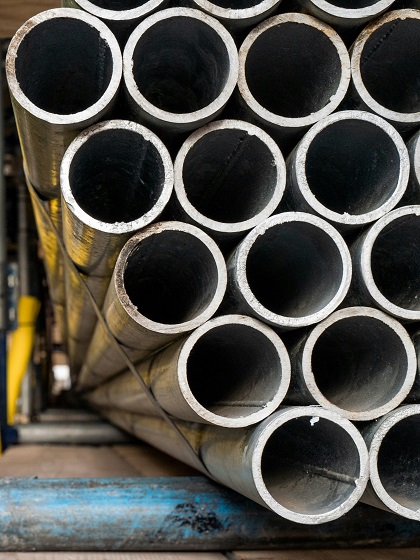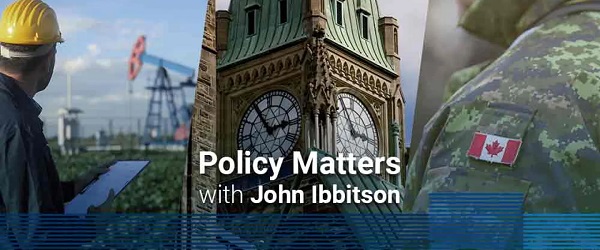Business
Trump imposes 25 percent tariff on all foreign steel, aluminum imports

Quick Hit:
President Donald Trump announced Sunday that he will impose a 25% tariff on all foreign steel and aluminum imports starting Monday. Speaking from Air Force One, Trump said the tariffs will apply to all countries, including key U.S. allies like Canada and Mexico. He also plans to unveil reciprocal tariffs on trading partners within days.
Key Details:
- Trump’s tariffs target steel and aluminum imports from all nations, including top suppliers Canada, Brazil, Mexico, South Korea, and Vietnam. Canada is also the leading source of U.S. aluminum imports.
- This move is part of Trump’s broader trade agenda, which has included tariffs on China and previous levies on Canada and Mexico. His first-term steel and aluminum tariffs sparked tensions with allies but led to renegotiated trade agreements.
- Trump’s proposal for reciprocal tariffs could trigger global trade disputes. He plans to announce these new measures midweek, stating, “If they charge us, we charge them.” Critics warn such tariffs could violate World Trade Organization rules.
Diving Deeper:
President Donald Trump announced a sweeping 25% tariff on all imported steel and aluminum, reigniting trade battles that defined his first term. Speaking aboard Air Force One while traveling to the Super Bowl, Trump confirmed that the tariffs would take effect Monday and apply to “everybody,” including major U.S. trading partners.
“Any steel coming into the United States is going to have a 25 percent tariff,” Trump said. “Aluminum, too.”
The decision marks a sharp escalation in Trump’s ongoing trade strategy, which has already led to tariffs on China and threats against European nations, Taiwan, and other key trading partners. Trump’s push for reciprocal tariffs—set to be detailed later this week—aims to raise U.S. import duties to match those imposed by foreign nations on American goods.
The impact of Trump’s steel and aluminum tariffs will be particularly significant for Canada, the largest supplier of both metals to the U.S. Other top steel providers include Brazil, Mexico, South Korea, and Vietnam. Aluminum imports primarily come from Canada, followed by the United Arab Emirates, Russia, and China.
Trump’s decision mirrors actions taken during his first term when he imposed broad steel and aluminum tariffs, triggering backlash from allies. He later eased restrictions on Canada and Mexico after renegotiating trade agreements. The Biden administration subsequently reached separate agreements with the European Union, the United Kingdom, and Japan, allowing some of those trade barriers to be reduced.
It remains unclear whether Trump’s new tariffs will be in addition to those still in place or replace existing measures. Either way, the move is likely to spark further retaliation from foreign governments.
Trump’s aggressive stance on trade has already disrupted global markets in recent days with frequent tariff threats. His proposed reciprocal tariffs, set to be announced Tuesday or Wednesday, are expected to take effect “almost immediately” and could violate World Trade Organization commitments.
“Very simply, if they charge us, we charge them,” Trump said.
As Trump moves forward with his latest round of trade measures, the global economic response remains uncertain. What is clear, however, is that his trade agenda remains a central pillar of his economic policy, setting the stage for renewed tensions with key allies and trading partners.
Business
Most Canadians say retaliatory tariffs on American goods contribute to raising the price of essential goods at home

- 77 per cent say Canada’s tariffs on U.S. products increase the price of consumer goods
- 72 per cent say that their current tax bill hurts their standard of living
A new MEI-Ipsos poll published this morning reveals a clear disconnect between Ottawa’s high-tax, high-spending approach and Canadians’ level of satisfaction.
“Canadians are not on board with Ottawa’s fiscal path,” says Samantha Dagres, communications manager at the MEI. “From housing to trade policy, Canadians feel they’re being squeezed by a government that is increasingly an impediment to their standard of living.”
More than half of Canadians (54 per cent) say Ottawa is spending too much, while only six per cent think it is spending too little.
A majority (54 per cent) also do not believe federal dollars are being effectively allocated to address Canada’s most important issues, and a similar proportion (55 per cent) are dissatisfied with the transparency and accountability in the government’s spending practices.
As for their own tax bills, Canadians are equally skeptical. Two-thirds (67 per cent) say they pay too much income tax, and about half say they do not receive good value in return.
Provincial governments fared even worse. A majority of Canadians say they receive poor value for the taxes they pay provincially. In Quebec, nearly two-thirds (64 per cent) of respondents say they are not getting their money’s worth from the provincial government.
Not coincidentally, Quebecers face the highest marginal tax rates in North America.
On the question of Canada’s response to the U.S. trade dispute, nearly eight in 10 Canadians (77 per cent) agree that Ottawa’s retaliatory tariffs on American products are driving up the cost of everyday goods.
“Canadians understand that tariffs are just another form of taxation, and that they are the ones footing the bill for any political posturing,” adds Ms. Dagres. “Ottawa should favour unilateral tariff reduction and increased trade with other nations, as opposed to retaliatory tariffs that heap more costs onto Canadian consumers and businesses.”
On the issue of housing, 74 per cent of respondents believe that taxes on new construction contribute directly to unaffordability.
All of this dissatisfaction culminates in 72 per cent of Canadians saying their overall tax burden is reducing their standard of living.
“Taxpayers are not just ATMs for government – and if they are going to pay such exorbitant taxes, you’d think the least they could expect is good service in return,” says Ms. Dagres. “Canadians are increasingly distrustful of a government that believes every problem can be solved with higher taxes.”
A sample of 1,020 Canadians 18 years of age and older was polled between June 17 and 23, 2025. The results are accurate to within ± 3.8 percentage points, 19 times out of 20.
The results of the MEI-Ipsos poll are available here.
* * *
The MEI is an independent public policy think tank with offices in Montreal, Ottawa, and Calgary. Through its publications, media appearances, and advisory services to policymakers, the MEI stimulates public policy debate and reforms based on sound economics and entrepreneurship.
Business
B.C. premier wants a private pipeline—here’s how you make that happen

From the Fraser Institute
By Julio Mejía and Elmira Aliakbari
At the federal level, the Carney government should scrap several Trudeau-era policies including Bill C-69 (which introduced vague criteria into energy project assessments including the effects on the “intersection of sex and gender with other identity factors”)
The Eby government has left the door (slightly) open to Alberta’s proposed pipeline to the British Columbia’s northern coast. Premier David Eby said he isn’t opposed to a new pipeline that would expand access to Asian markets—but he does not want government to pay for it. That’s a fair condition. But to attract private investment for pipelines and other projects, both the Eby government and the Carney government must reform the regulatory environment.
First, some background.
Trump’s tariffs against Canadian products underscore the risks of heavily relying on the United States as the primary destination for our oil and gas—Canada’s main exports. In 2024, nearly 96 per cent of oil exports and virtually all natural gas exports went to our southern neighbour. Clearly, Canada must diversify our energy export markets. Expanded pipelines to transport oil and gas, mostly produced in the Prairies, to coastal terminals would allow Canada’s energy sector to find new customers in Asia and Europe and become less reliant on the U.S. In fact, following the completion of the Trans Mountain Pipeline expansion between Alberta and B.C. in May 2024, exports to non-U.S. destinations increased by almost 60 per cent.
However, Canada’s uncompetitive regulatory environment continues to create uncertainty and deter investment in the energy sector. According to a 2023 survey of oil and gas investors, 68 per cent of respondents said uncertainty over environmental regulations deters investment in Canada compared to only 41 per cent of respondents for the U.S. And 59 per cent said the cost of regulatory compliance deters investment compared to 42 per cent in the U.S.
When looking at B.C. specifically, investor perceptions are even worse. Nearly 93 per cent of respondents for the province said uncertainty over environmental regulations deters investment while 92 per cent of respondents said uncertainty over protected lands deters investment. Among all Canadian jurisdictions included in the survey, investors said B.C. has the greatest barriers to investment.
How can policymakers help make B.C. more attractive to investment?
At the federal level, the Carney government should scrap several Trudeau-era policies including Bill C-69 (which introduced vague criteria into energy project assessments including the effects on the “intersection of sex and gender with other identity factors”), Bill C-48 (which effectively banned large oil tankers off B.C.’s northern coast, limiting access to Asian markets), and the proposed cap on greenhouse gas (GHG) emissions in the oil and gas sector (which will likely lead to a reduction in oil and gas production, decreasing the need for new infrastructure and, in turn, deterring investment in the energy sector).
At the provincial level, the Eby government should abandon its latest GHG reduction targets, which discourage investment in the energy sector. Indeed, in 2023 provincial regulators rejected a proposal from FortisBC, the province’s main natural gas provider, because it did not align with the Eby government’s emission-reduction targets.
Premier Eby is right—private investment should develop energy infrastructure. But to attract that investment, the province must have clear, predictable and competitive regulations, which balance environmental protection with the need for investment, jobs and widespread prosperity. To make B.C. and Canada a more appealing destination for investment, both federal and provincial governments must remove the regulatory barriers that keep capital away.
-

 COVID-197 hours ago
COVID-197 hours agoFDA requires new warning on mRNA COVID shots due to heart damage in young men
-

 Business5 hours ago
Business5 hours agoCarney’s new agenda faces old Canadian problems
-

 Indigenous6 hours ago
Indigenous6 hours agoInternal emails show Canadian gov’t doubted ‘mass graves’ narrative but went along with it
-

 Bruce Dowbiggin8 hours ago
Bruce Dowbiggin8 hours agoEau Canada! Join Us In An Inclusive New National Anthem
-

 Bruce Dowbiggin2 days ago
Bruce Dowbiggin2 days agoThe Covid 19 Disaster: When Do We Get The Apologies?
-

 Business2 days ago
Business2 days agoCarney government should recognize that private sector drives Canada’s economy
-

 Alberta2 days ago
Alberta2 days agoFourteen regional advisory councils will shape health care planning and delivery in Alberta
-

 Alberta2 days ago
Alberta2 days agoAlberta school boards required to meet new standards for school library materials with regard to sexual content




